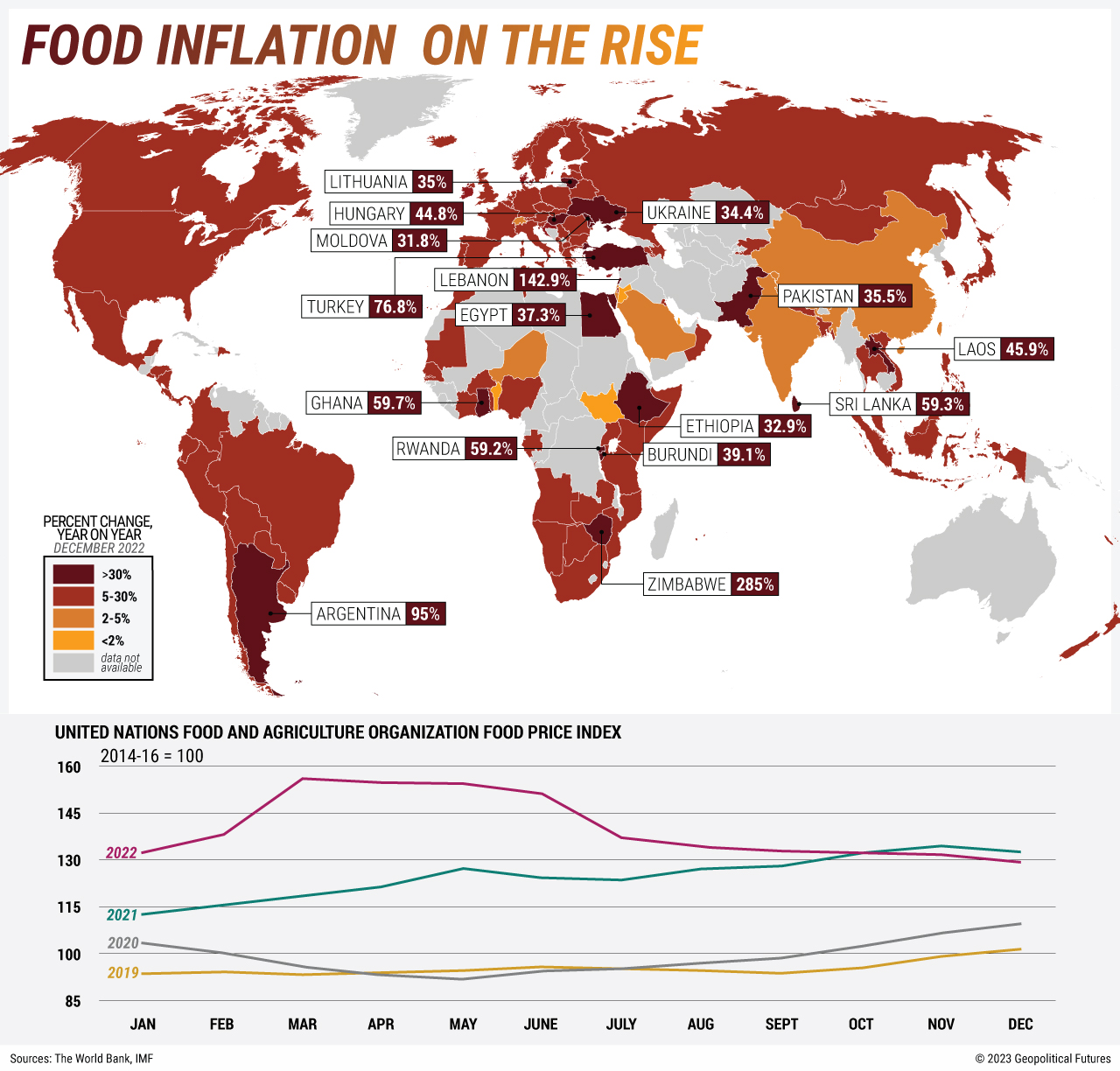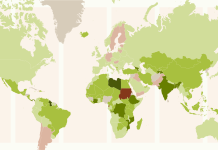This time last year, world food prices started to rise. It was the beginning of a series of spikes in food costs due largely to rising fertilizer prices, increasing fuel costs, the Ukraine war and logistical backlogs. Inflationary pressures subsided somewhat throughout the course of 2022, but from September to December, nearly all low- and lower-middle-income countries (83.3 percent and 90.5 percent, respectively) experienced food inflation above 5 percent.
It seems prices will start to stabilize this year as many of the drivers behind the spikes have started to weaken. The situation is still uncertain, however. Fertilizer supplies remain tight, and the war in Ukraine continues to disrupt grain markets. There are also concerns over poultry supplies as corn prices continue to creep up and the bird flu hits farms across the globe. So despite some promising signs, it could be another tough year for consumers.







 Special Collection – The Middle East
Special Collection – The Middle East